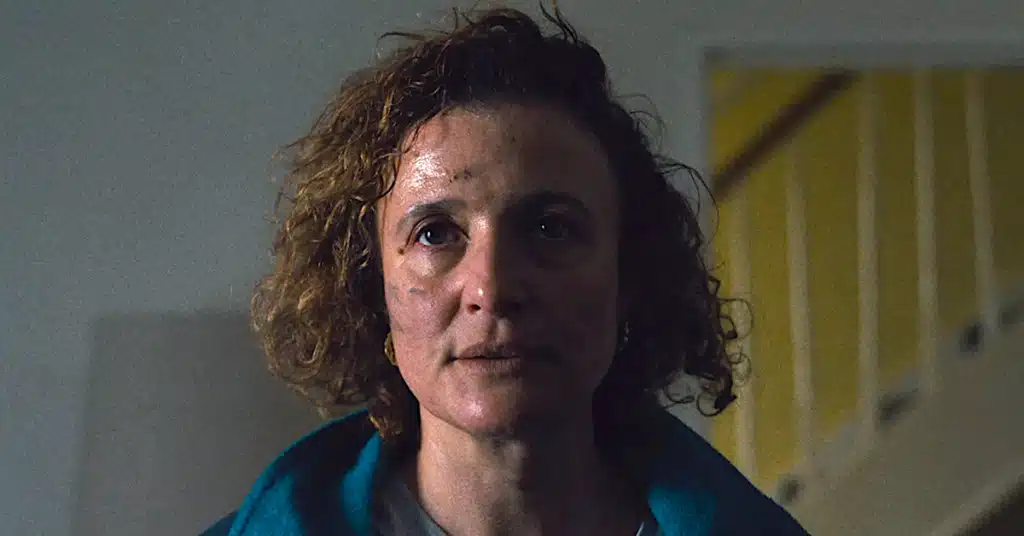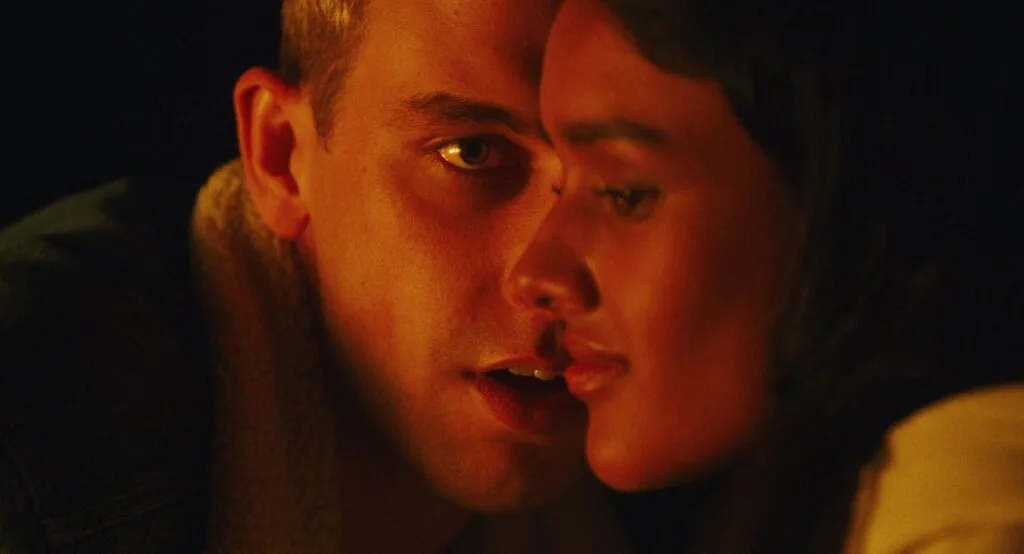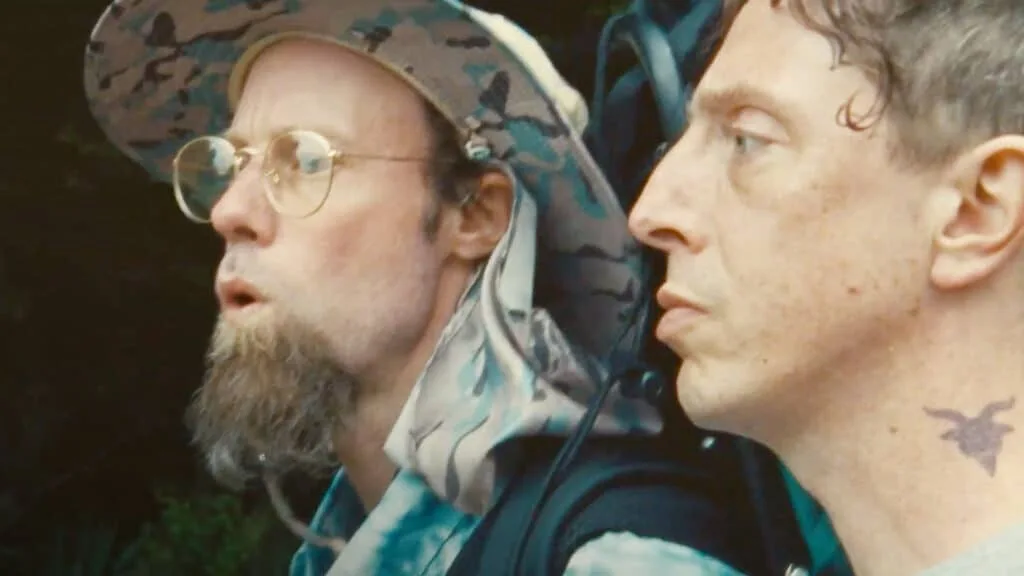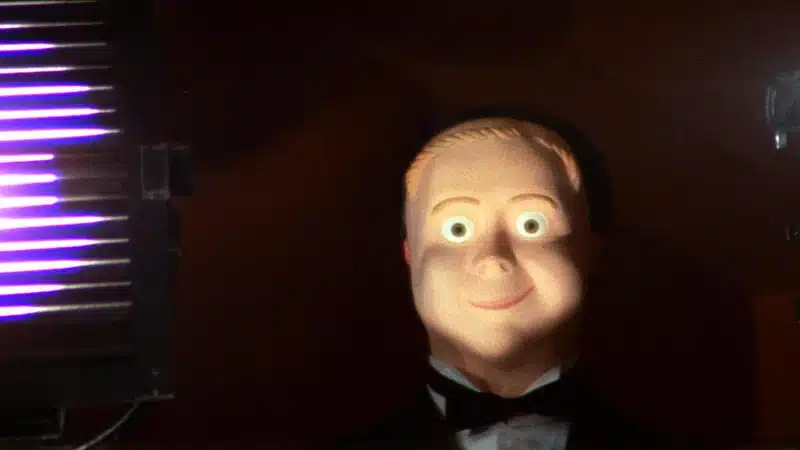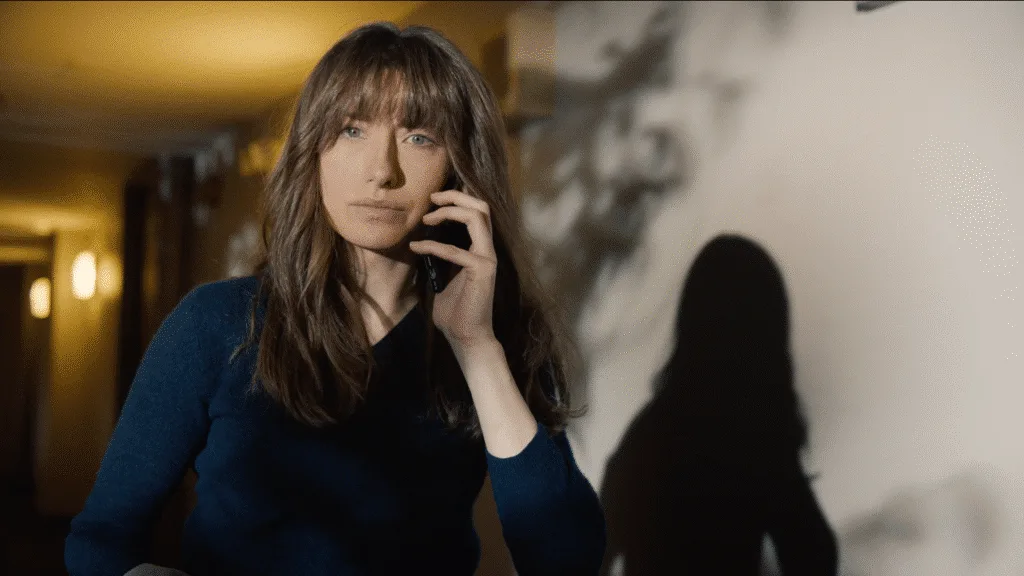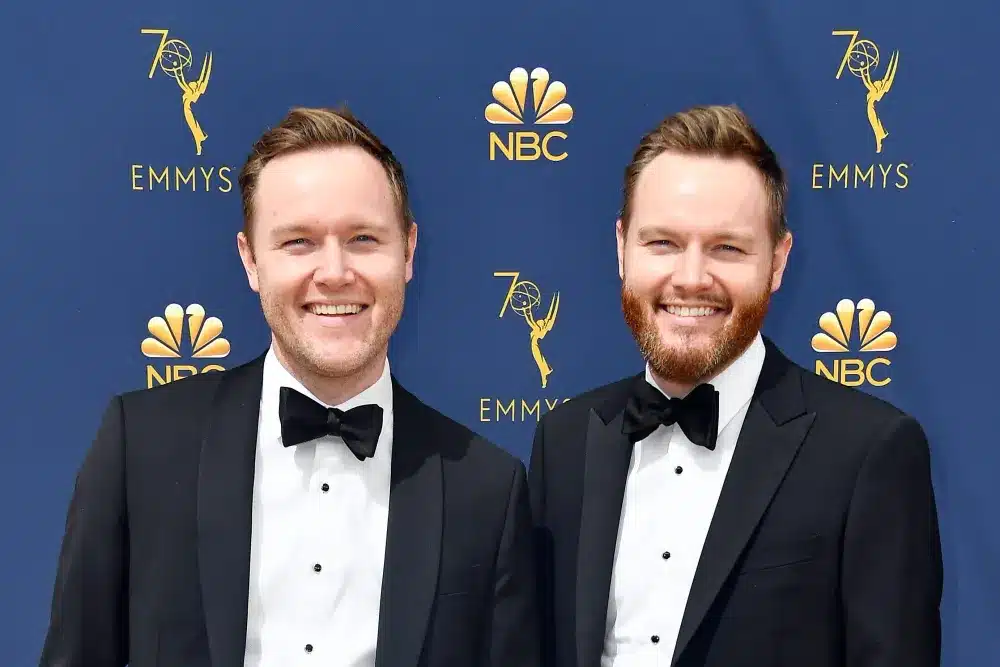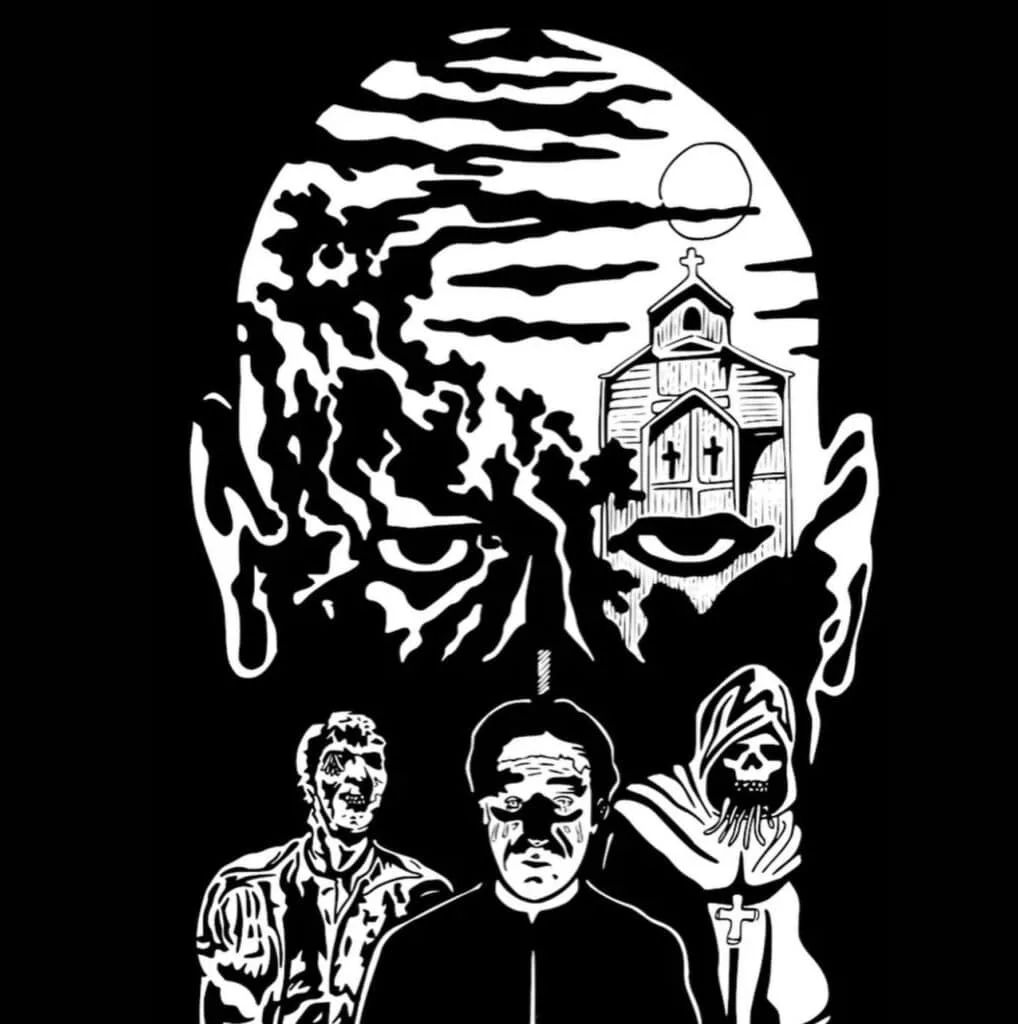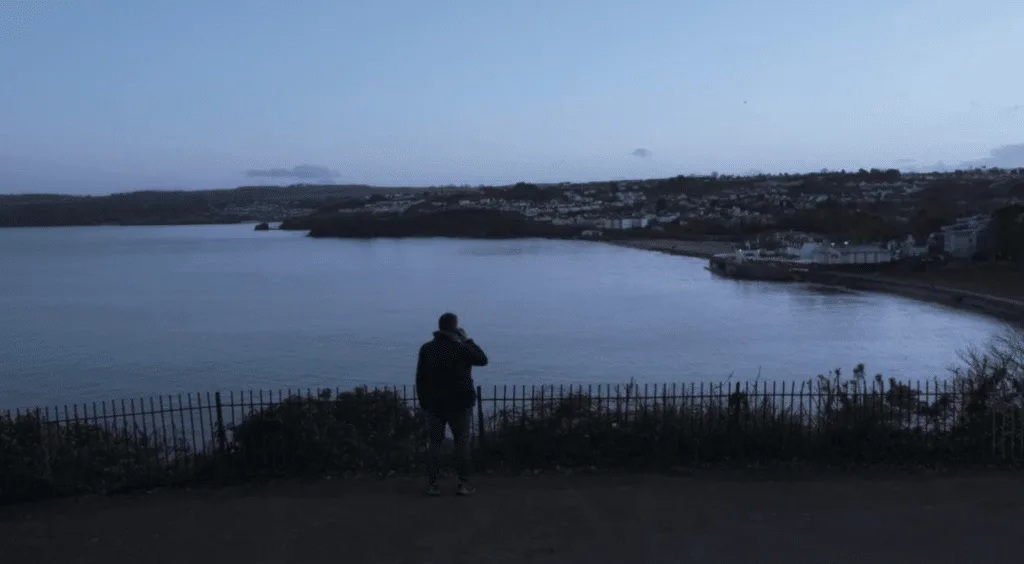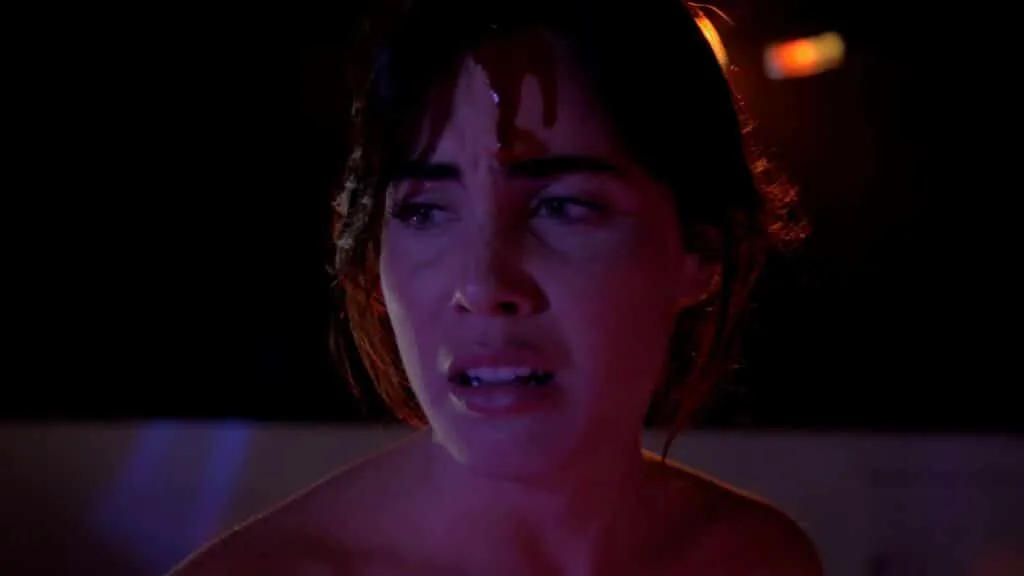
Independent cinema needs to do a lot with a little, and this has to be one of the reasons it now so often dodges linear narratives, preferring imagined spaces or fractured timelines in order to explore its key themes, particularly if they are large or significant themes. Horror is primed for this by its nature: give us a dreamscape, say; make the monsters symbolic rather than literal, and a lot of the work is done.
This is the basic premise of The Dreadful Place (2025) in a nutshell: Willow (Keaton McLachlan) is about to mark the anniversary of her father’s traumatic death and this triggers a series of unpleasant nightmares. She has to negotiate her way through these nightmares in order to resume real life again. In terms of a plotline – that’s it. We see her first zoning out of an admittedly slightly tedious, but functional everyday life, then going far further, pitching headlong into a world of dreams peopled variously by her deceased father, her creepy neighbour and her ex, so it’s clear that all of these men, to some extent, have been troubling her unconscious mind. There are some other key players too – mostly friends and co-workers, transformed into challenging or disagreeable versions of themselves as a means of drawing key truths from Willow so she can ultimately wake up and get back to her regular life, free at last of the unspoken, unexplored emotional baggage she’s been carrying around for these past six years.
It’s never made abundantly clear to the audience where the dividing line between waking world and dreamscape falls, though there is actually very little beyond the opening credits which isn’t at least partly a dream. For viewers, having gleaned the basic premise of residual trauma, a lot of the experience of watching this film is sorting ‘real’ idea from nightmare, picking out the bare bones of the background story. This is certainly experimental in its way, and given that director and writer Cole Daniel Hills, as a new and a young filmmaker, has chosen this potentially contentious approach, there’s has to be some credit due for making his film his own way.
However, it’ll likely be divisive when it gets out into the wider arena. For this reviewer, it’s not quite my bag, for reasons I’ll explain. For me, the sheer number of films whose stories operate in some never-never, ungoverned by anything coherent or complex feel – on the whole – like something of a cop-out. Rendering most of a feature-length film down to a long run of uncertain, obfuscating dreams divests the film of any narrative weight, clarity or cogency, meaning that the film feels meandering and unsteady, even across a relatively economical ninety-minute runtime. Ninety minutes of dreams, there to reveal a fairly self-evident array of truths? It feels repetitive, and it also requires an amount of patience which has ebbed over the past few years. There’s a similar feel here to a lot of the ‘quantum horror’, if we can call it that, which has popped up post-Covid, when everyone lost track of time, place and reality and made films about that: characters operate in maze-like, unreal scenarios, deliberating about themselves to get the kinds of answers you might seek in therapy. The Dreadful Place feels, in many respects, like another film doing this, and unfortunately it suffers, for me, by the comparison.
However, to give it its dues: it does pitch itself at an interesting point in Willow’s life, coming as it does not immediately after her loss, but six years later: she has, in that time, been keeping her head above water perhaps, but not dealing openly with the ideas troubling her and this has left her vulnerable to this kind of temporary breakdown. The Dreadful Place does capture something of the escalating unpleasantness of nightmares, and of how they co-opt people and places, quickly moving from normal to uneasy to frightening; there are some nicely set up scenes and there are inclusions here which are genuinely eerie. All of this is underpinned by Keaton McLachlan’s strong performance as Willow; Willow is played with sympathy throughout and given that McLachlan is on screen for nearly every moment of the film’s runtime, it’s so important that she’s able to do so much with this role. Essentially, there are lots of good elements here and every reason to suppose that future projects will go from strength to strength, even if the central premise of The Dreadful Place isn’t to my particular tastes.
The Dreadful Place (2025) will be released digitally later this year.

